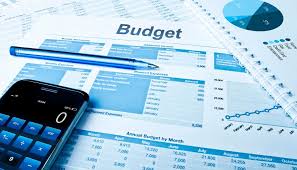Creating a budget is one of the most effective ways to take control of your financial life. Whether you’re trying to save for a big purchase, pay down debt, or simply better manage your monthly expenses, a well-structured budget can help you achieve your financial goals. However, many people find budgeting overwhelming or confusing, especially when they don’t know where to start.
In this article, we’ll walk you through the steps to create a personalized budget that works for you. We’ll cover why budgeting is important, the different types of budgets you can use, and how to track your spending. By the end, you’ll have the tools you need to manage your money more effectively and set yourself on the path to financial stability.
Why is Budgeting Important?
Before we dive into the “how” of budgeting, it’s important to understand why budgeting is crucial for financial health. A budget serves as a blueprint for your money. It provides a clear view of how much you earn, how much you spend, and where your money is going. Here are some of the key benefits of having a budget:
- Helps You Track Spending: A budget allows you to understand where your money is going each month, so you can identify areas where you may be overspending.
- Reduces Financial Stress: Knowing exactly how much you can afford to spend and how much you need to save can take away financial worries.
- Enables Saving for Goals: Whether it’s an emergency fund, a vacation, or retirement, a budget helps you allocate money toward your financial goals.
- Prevents Overspending: A budget acts as a spending limit, helping you stay within your means and avoid financial trouble.
Creating a budget may seem challenging, but once you have a strategy in place, it can be empowering and help you reach your financial goals.
Step-by-Step Guide to Creating a Budget
Step 1: Determine Your Income
The first step in creating a budget is to figure out your total income. This includes all sources of money you receive, whether it’s from your primary job, freelance work, side businesses, or investments. If you’re salaried, this should be a straightforward calculation based on your monthly income before taxes. However, if you have irregular income (e.g., commissions or freelance work), it’s helpful to take an average of your income over the past few months.
Some things to include:
- Salary (after taxes)
- Bonuses or commissions
- Side income (freelancing, gigs)
- Investment income or rental property income
The goal here is to determine the amount of money you have to work with each month. Once you have your total income figured out, you’ll know how much you can allocate to various expenses.
Step 2: List Your Expenses
The next step is to list all your expenses. Expenses are often broken down into two main categories: fixed and variable.
- Fixed Expenses: These are costs that remain the same each month. For example, rent, mortgage payments, car loans, insurance premiums, and subscription services like Netflix or Spotify.
- Variable Expenses: These expenses can fluctuate month-to-month. Examples include groceries, utilities, dining out, entertainment, and transportation costs like gas.
Start by listing every expense you can think of. Don’t forget to include any irregular expenses like annual insurance premiums or one-time purchases that may occur in the future. Here’s a helpful breakdown:
- Fixed Expenses:
- Rent or mortgage
- Utility bills (electricity, water, internet)
- Insurance (health, car, life)
- Loan payments (student loans, car loans)
- Variable Expenses:
- Groceries
- Dining out and entertainment
- Gas and transportation
- Clothing
- Subscriptions (Netflix, gym, apps)
Once you’ve identified all of your expenses, total them up. This will give you a clear picture of how much you’re spending every month.
Step 3: Categorize Your Spending
Now that you’ve listed all your expenses, it’s time to categorize them. This step helps you identify where your money is going and where you may be able to cut back.
Here are some common categories:
- Necessities: This includes fixed expenses and essential variable expenses like groceries and transportation.
- Non-Essentials: These are expenses you can reduce or eliminate if necessary, like entertainment, dining out, and shopping.
- Savings and Debt Repayment: This category includes contributions to savings accounts, retirement funds, emergency funds, and payments toward outstanding debts.
By grouping your expenses into categories, you’ll get a clearer understanding of which areas of your budget can be adjusted.
Step 4: Set Realistic Financial Goals
A budget is not just about tracking income and expenses—it’s about working toward your financial goals. Take some time to think about what you want to achieve in the short and long term. Your goals could include:
- Paying off credit card debt
- Building an emergency fund
- Saving for a home or car
- Retirement savings
- Going on vacation
Once you’ve defined your goals, assign specific amounts to save or pay toward each goal. Be sure to prioritize essentials like debt repayment and building an emergency fund before allocating money to other goals.
For example:
- Short-Term Goals: Save $1,000 for an emergency fund within six months.
- Long-Term Goals: Save 10% of your income for retirement.
Setting clear, actionable goals gives you motivation and direction as you work through your budget each month.
Step 5: Choose a Budgeting Method
There are various methods you can use to manage your budget. The key is finding one that works for your lifestyle and financial situation. Here are some of the most popular budgeting methods:
- Zero-Based Budgeting: This method involves assigning every dollar of your income to a specific category, so that you have zero dollars left over. It ensures that your money is working toward your goals and forces you to be conscious of every dollar you spend.
- 50/30/20 Rule: In this method, you allocate 50% of your income to needs (e.g., housing, utilities), 30% to wants (e.g., entertainment, dining out), and 20% to savings and debt repayment.
- Envelope System: This system involves using physical envelopes to set aside cash for each category of your spending. Once the money in an envelope is gone, you can’t spend any more in that category for the month. This method works best for people who struggle with overspending.
- Pay Yourself First: This approach focuses on saving before anything else. You prioritize saving a certain percentage of your income (often 20% or more) before allocating money to other expenses.
Choose the method that aligns with your financial goals and lifestyle. It may take some trial and error to find the right fit.
Step 6: Track Your Spending
Once you’ve set your budget, it’s time to track your spending. Monitoring your expenses ensures that you’re sticking to your budget and helps you identify areas where you may need to adjust. There are several tools available for tracking your spending:
- Budgeting Apps: Apps like Mint, YNAB (You Need a Budget), or EveryDollar allow you to track your income and expenses automatically, syncing with your bank accounts and credit cards.
- Spreadsheets: You can create a simple budget using Excel or Google Sheets. This is a more manual approach but gives you full control over your budget.
- Paper and Pen: If you prefer a hands-on approach, you can keep a written record of your expenses. This may be a bit more time-consuming but works well for some people.
Tracking your spending regularly will help you stay on top of your finances and adjust your budget as needed.
Step 7: Adjust and Review Regularly
Your budget is not set in stone. Life changes, and so will your financial situation. It’s important to review your budget periodically and adjust it if necessary. For example, if you get a raise, you might increase your savings contributions. If you pay off a loan, you may decide to redirect that money toward a new goal.
You should also review your budget whenever there’s a significant change in your spending habits, such as an unexpected expense or a shift in your income.
Conclusion
Creating a budget that works for you doesn’t have to be complicated. By following these steps—understanding your income, listing your expenses, setting goals, and tracking your spending—you can create a personalized budget that helps you achieve financial stability and security. Remember that budgeting is a dynamic process, and it’s important to adjust your budget as your circumstances change.
The key to a successful budget is consistency. Stick with it, track your progress, and make adjustments as needed. With a clear budget in place, you’ll be better equipped to take control of your finances and achieve your financial goals.

